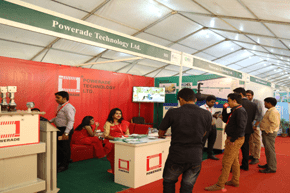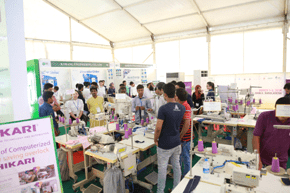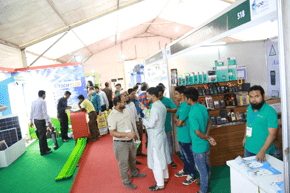Although for the last couple of years foreign direct investment (FDI) from India to Bangladesh has shown an upward trend, the amount is still insignificant.
While India’s outward FDI has jumped to $52 billion last year, Bangladesh received less than 1 (one) per cent of the amount. Official statistics, revealed by Bangladesh Bank, the country’s central bank, showed that net inflow of Indian FDI in Bangladesh stood $67.82 million in 2014, a 50 per cent rise over the previous year.
At the same time, FDI from Pakistan has increased many folds and overtaken India by a big margin. Pakistan FDI into Bangladesh stood at $130.74 million last year, a whopping 508 per cent rise over the $25.7 million logged in 2013.
This clearly indicates that Pakistani enterprises are not only filling a chunk of the investment gap in Bangladesh, but are also trying to take advantage of the country’s global market access facility.
Again, when Indian FDI flew in Bangladesh has been fluctuating for the last couple of years; Chinese FDI is slowly rising and has come closer to India. Last year, Bangladesh has received FDI worth $43 million from China.
Ignored Neighbor:
The low Indian FDI in South Asia is not without some valid reasons. Official restrictions on FDI to and from Pakistan were in force till 2012. It is unlikely that Indian investments into Pakistan will show a surge in the near future.
Nepal and Sri Lanka have received a lot of their FDI from India. But they have difficulty absorbing large-scale foreign investments in one go, given the size of their economies and their growth patterns.
Bangladesh also had a similar kind of problem. It was a decade ago when the Tata Group proposed investing $3 billion in steel, fertilizer and power. The country’s average annual inward FDI was $600 million at that time.
The Tata Group’s FDI proposal created an uproar, and some quarters found it ‘against the interest’ of the country.
Failed negotiations over guaranteed supply of gas and tax breaks finally drove the Tata Group to call off its plan in 2008. That was actually a setback for Bangladesh, while the ‘anti-Indian’ attitude prevailed.
Moreover, Bangladesh was also not capable at that time of dealing with such a mega foreign investment plan. The Mittal Group, based in United Kingdom but known as an Indian conglomerate, also came with investment proposals worth $2.9 billion in 2007. A memorandum of understanding was also signed with the Board of Investment (BoI), the investment promotion agency of Bangladesh, to invest in coal mine development, oil exploration and production, power plants and petrochemicals.
Growing interest
Nevertheless, in the last couple of years, some Indian companies have come with direct and joint investments in Bangladesh, reflecting their growing interest.
Bharti Airtel is an example. It acquired 70 percent stake in Warid Telecom, Bangladesh, in 2010. It has also injected some $300 million in subsequent years. Now, it has become Airtel Bangladesh.
Ambattur Clothing, a Chennai-based company, started operations in Bangladesh in 2007 and later set up its own manufacturing units through acquisitions. Indian tire manufacturing giant CEAT has tied up with Bangladesh’s AK Khan Group to form CEAT Bangladesh and is now preparing for commercial operation. Their products are likely to hit the market next year.
There is still some skepticism. SAHARA Group came with a mega proposal to invest $12.5 billion in four years. This raised eyebrows in Bangladesh as such a mega proposal sounded unrealistic.
Initially, a memorandum of understanding to invest $100 million to develop a real estate project was signed with BoI. There was, however, no progress as the group’s chief finally went behind bars in India.
Due to geographical proximity and shared history and culture, Indian investors have a comparative advantage over others in Bangladesh. The country’s growing demand, ranging from physical infrastructure to consumer products, brings an opportunity.
India is Bangladesh’s second largest import source. Again, India provides tariff-free access to Bangladeshi products.
But Bangladesh’s exports to China are rising at a faster rate by taking advantage of preferential market access. Bangladesh also has tariff-free access to European Union, Canada, Japan, Australia and other developed countries except to the US.
Indian manufactures can tap the access by investing and manufacturing in Bangladesh. Recent trends show that joint ventures are a better way to tap the country’s markets while investing from India.
Tapping the changes
Many things in Bangladesh have changed in the past decade. Compared with other neighboring countries, the Bangladeshi economy is growing steadily now.
The annual average economic growth rate has been over 6 per cent for the last decade. The country has proved its resilience in weathering both internal and external shocks. With a rising middle-class and 2 million job entrants every year, demand for goods and employment is high.
The political situation has also changed significantly. Over the last six years, the Bangladesh government has taken a series of strong measures to address issues of concern for India. Bangladesh is also actively supporting sub-regional integration.
Policy consistency has set in as well. Any change in power in the future is unlikely to have a major impact on foreign investment.
On the eve of Prime Minister H.E. Mr. Narendra Modi’s first visit to Bangladesh, a platform for Indian investors has been chalked out. Providing two special economic zones exclusively for Indian investors is a clear reflection of Bangladesh’s positive intent. The positivity will continue if Indians consider Bangladesh as a long-term investment option.





